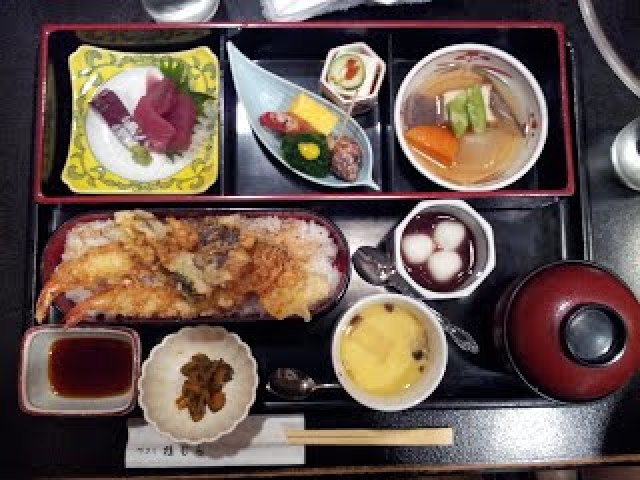Japanese cuisine encompasses the regional and traditional foods of Japan, which have developed through centuries of political, economic, and social changes. The traditional cuisine of Japan, washoku is based on rice with miso soup and other dishes. There is an emphasis on seasonal ingredients. Side dishes often consist of fish, pickled vegetables, and vegetables cooked in broth. Seafood is common, often grilled, but also served raw as sashimi or in sushi. Seafood and vegetables are also deep-fried in a light batter, as tempura. Apart from rice, staples include noodles, such as soba and udon. Japan also has many simmered dishes such as fish products in broth called oden, or beef in sukiyaki and nikujaga.
Historically influenced by Chinese cuisine, Japanese cuisine has more recently been influenced by Western cuisines in the modern era. Dishes inspired by foreign food—in particular Chinese food—like ramen and gyoza, as well as foods like spaghetti, curry, and hamburgers, have become adopted with variants for Japanese tastes and ingredients. Traditionally, the Japanese shunned meat because of Buddhism, but with the modernization of Japan in the 1880s, meat-based dishes such as tonkatsu and yakiniku have become common. Japanese cuisine, particularly sushi, has become popular throughout the world.
Due to the lack of meat products Japanese people minimized spice utilization. Spices were rare to find in the past. Spices like pepper and garlic were only used in a minimalist amount. In the absence of meat, fish was served as the main protein, as Japan is an island nation. Fish has influenced many iconic Japanese dishes today. In the 9th century, grilled fish and sliced raw fish were widely popular. In traditional Japanese cuisine, oil and fat are usually avoided within the cooking process, because Japanese people were trying to keep a healthy lifestyle.
In 2011, Japan overtook France in becoming the country with the most 3-starred Michelin restaurants. As of 2018, Tokyo has maintained the title of the city with the most 3-starred restaurants in the world.

